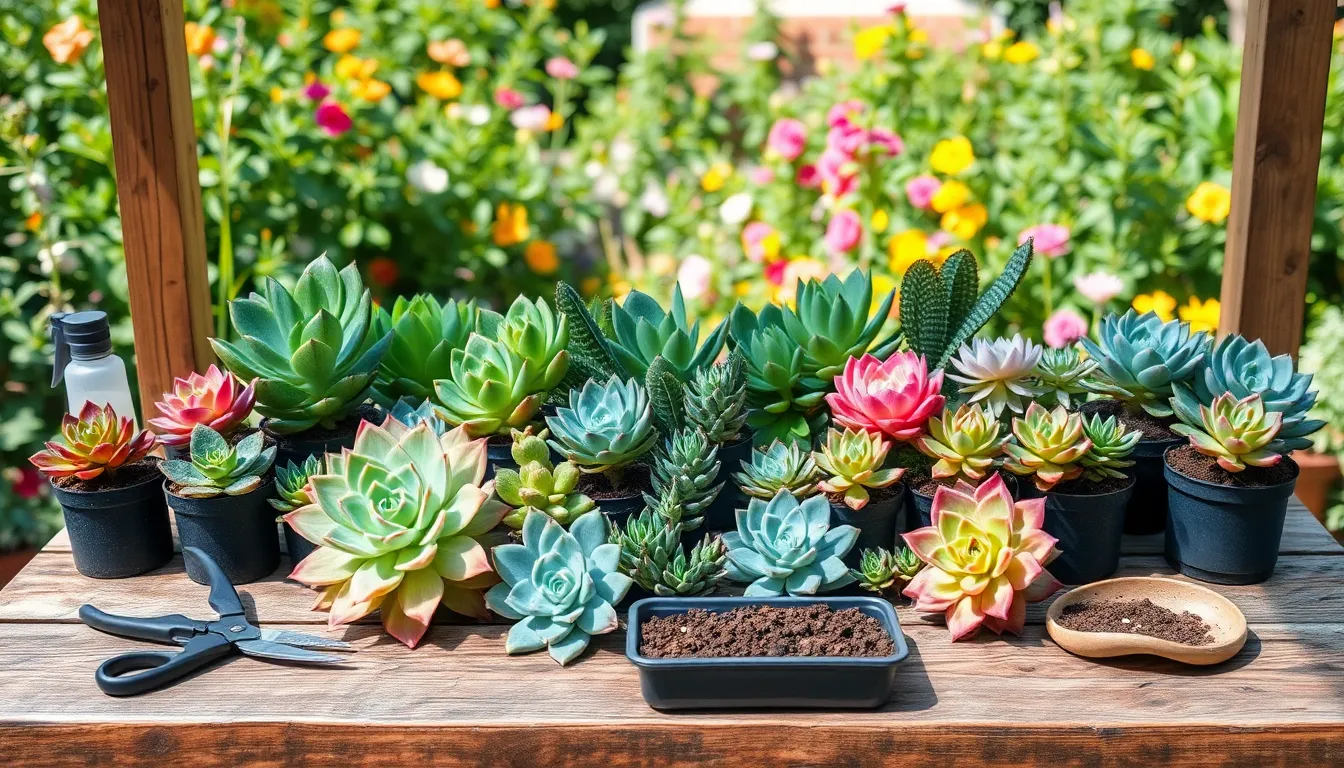Ah, succulents—those charming, resilient little wonders that have captured the hearts of gardeners everywhere. Whether you’re just beginning to cultivate your green thumb or you’re a seasoned gardener with a flourishing backyard oasis, propagating succulents is a rewarding endeavor that invites a deeper connection with these fascinating plants. Not only does propagation offer a cost-effective way to expand your collection, but it also provides an opportunity to share nature’s beauty with friends and family. You’ll soon find that watching a new plant sprout from a single leaf or cutting can be as satisfying as it is magical.
Understanding why propagation is important is the first step in unlocking a new layer of gardening enjoyment. For beginners, it’s a delightful experiment that requires minimal investment and yields endless learning opportunities. Experienced gardeners will appreciate the chance to refine their propagation techniques while adding unique varieties to their existing plant repertoire. This article will guide you through the process, from selecting the right tools to identifying the perfect time for propagation, ensuring your success every step of the way.
By the time you reach the end, you’ll be equipped with practical tips and insights to make succulent propagation an integral part of your gardening routine. You’ll discover how propagation can enhance not just your garden, but your appreciation for these tenacious plants that thrive on neglect and sunshine. So, let’s embark on this journey together, and transform your gardening experience with the joy and satisfaction that comes from creating new life with your own hands. Dive into the world of succulent propagation, where every leaf holds the promise of a new beginning.
Benefits of Succulent Propagation
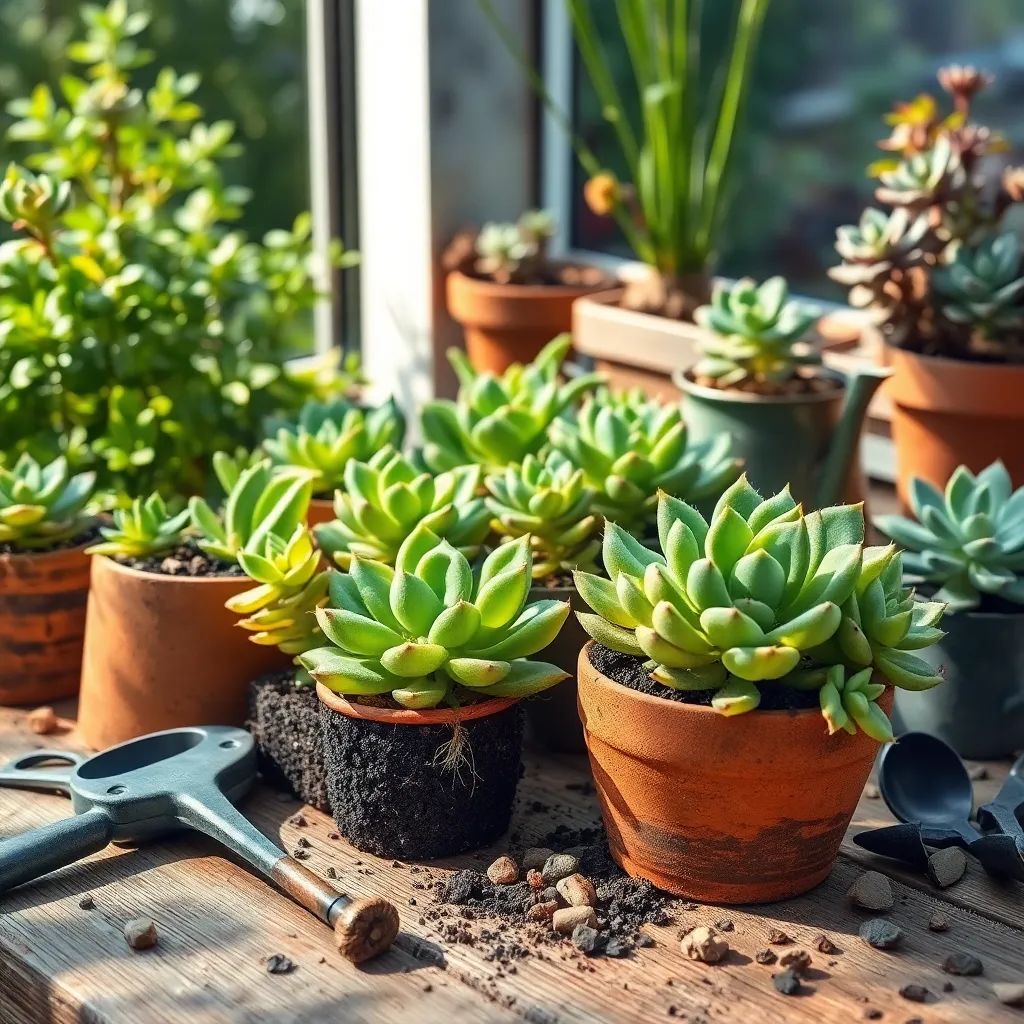
Propagating succulents is a highly rewarding endeavor that allows gardeners to expand their collection with minimal effort. By using leaves or cuttings from a healthy plant, you can create new plants that thrive in similar conditions.
One of the greatest benefits of succulent propagation is cost savings. Instead of purchasing new plants, you can propagate from existing ones, making it a budget-friendly way to beautify your space. Additionally, sharing propagated plants with friends or family can be a delightful way to spread the joy of gardening.
Another advantage lies in the ease of propagation, which makes it perfect for beginners. Succulents, like Echeveria and Jade, require just a few simple steps to multiply: gently twist off a leaf, let it dry for a few days, and place it on well-draining soil.
Advanced gardeners can experiment with different techniques, such as water propagation, to see what works best for their climate. Ensuring the right environment, such as bright indirect light and infrequent watering, will optimize growth and success rates.
Finally, propagating succulents increases your understanding of plant biology and care, enriching your overall gardening experience. Observing the growth process from a single leaf to a full plant is both educational and satisfying, making every propagation journey unique and fulfilling.
Cost-Effective Gardening Solutions
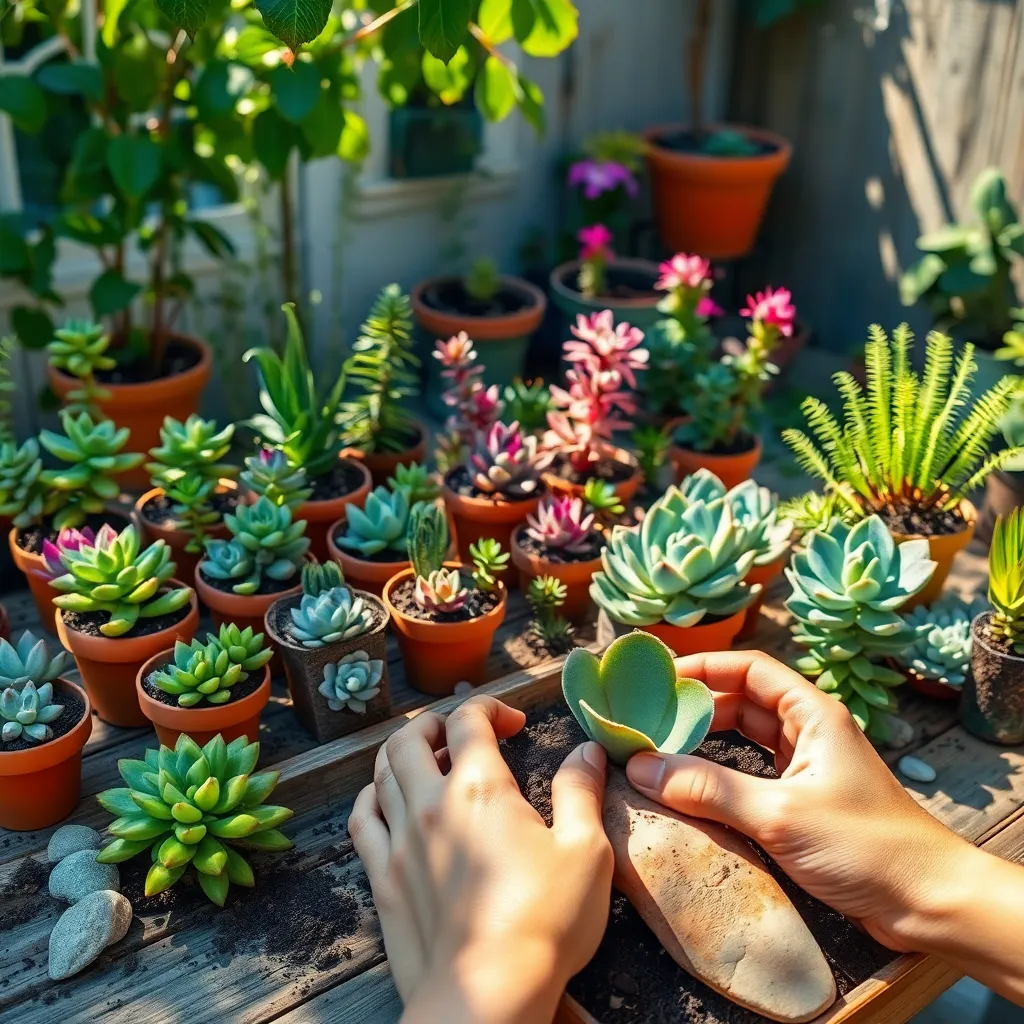
Propagating succulents is a cost-effective way to expand your collection without breaking the bank. By using simple techniques, you can multiply your plants and enjoy a lush garden at a fraction of the cost of buying new ones.
Start by selecting healthy parent plants, as they will produce the best offspring. Choose leaves or stems that are plump and free from blemishes, ensuring a higher success rate in propagation.
Soil choice is crucial for successful propagation. Opt for a well-draining cactus mix or create your own by combining equal parts of sand, perlite, and potting soil.
Once you’ve prepared your soil, let the cuttings dry for a day or two to form a callus. This step reduces the risk of rot when you plant them in the soil.
Water sparingly after planting, as overwatering is a common mistake in succulent care. Allow the soil to dry out completely between waterings to mimic their natural arid habitat.
For an advanced tip, try propagating succulents in water. This method allows you to monitor root growth and can be an exciting way to watch your plants develop.
Consider using recycled containers as pots to save money and reduce waste. Anything from yogurt cups to old teacups can serve as a charming home for your new plants.
Finally, remember that sunlight is essential for healthy growth. Place your propagated succulents in a bright location, but avoid direct afternoon sun to prevent scorching.
Enhancing Your Plant Collection
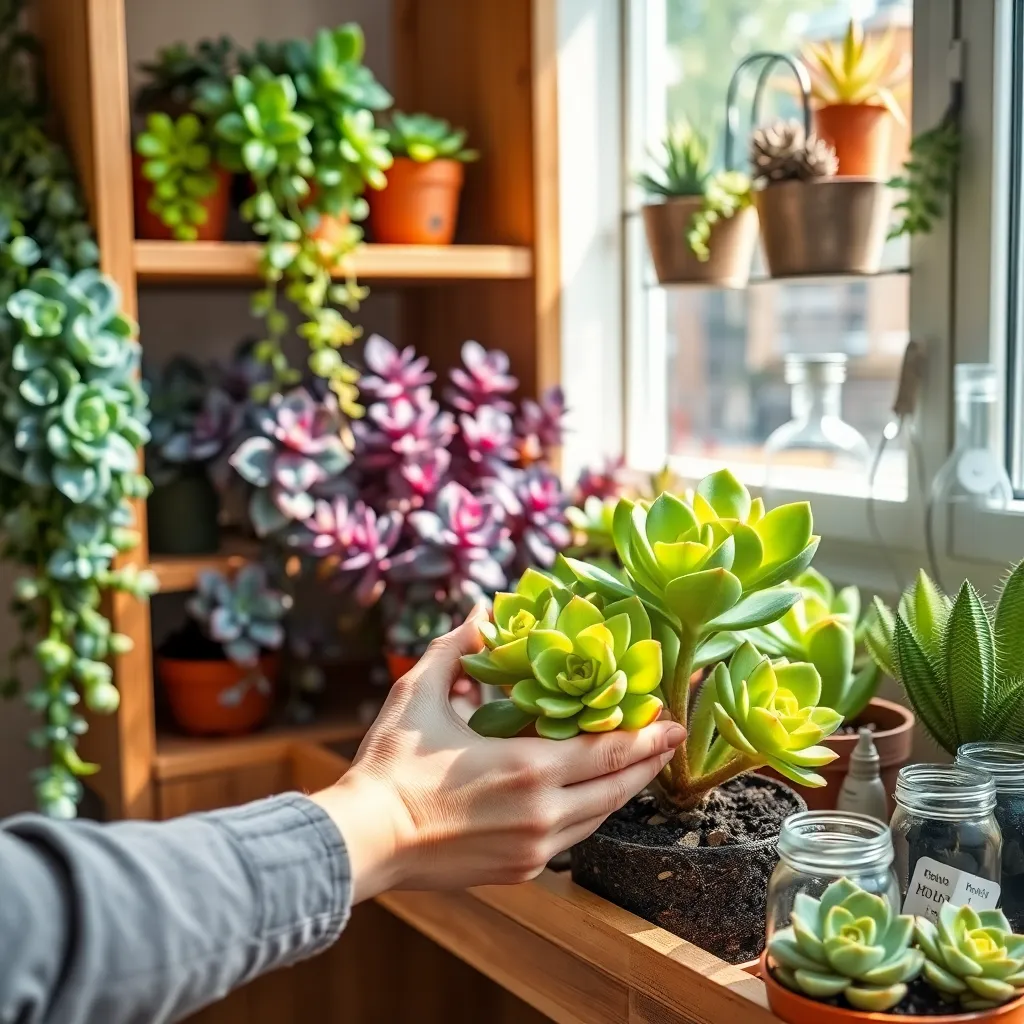
Propagating succulents offers a simple way to enhance your plant collection without breaking the bank. By utilizing cuttings or offsets, you can create new plants from existing ones, ensuring you always have fresh greenery to enjoy.
Start by selecting healthy, mature succulents as parent plants for propagation. It’s crucial to use sterilized tools to make clean cuts, which helps prevent infections and encourages quicker rooting.
Allow cuttings to dry for a few days before planting them in soil; this promotes callus formation, which is essential for successful growth. For best results, use a well-draining soil mix, such as a blend of cactus soil and perlite, to prevent root rot.
Once planted, place your succulent cuttings in a bright, indirect light location to encourage healthy growth. Water sparingly, only when the soil is completely dry, as overwatering can lead to root rot and other issues common with succulents.
Experienced gardeners might consider experimenting with different propagation techniques, like leaf propagation, which can be both challenging and rewarding. Keep a close eye on humidity levels to ensure the leaves don’t dry out too quickly, especially in arid climates.
Using propagation, you can diversify your collection with unique varieties and colors. Sharing propagated plants with friends and family can also be a fun way to spread the joy of gardening while showcasing your growing expertise.
Step-by-Step Propagation Guide

Starting with succulent propagation, the leaf-cutting method is a popular choice due to its simplicity. To begin, gently twist a healthy leaf from the main stem, ensuring you include the entire base of the leaf to encourage successful growth.
Allow the leaf to dry for a few days until the cut end forms a callous. This step is crucial as it prevents the leaf from rotting when placed on moist soil.
Once the leaf has calloused, prepare a well-draining soil mix, ideally a combination of cactus soil and perlite. Place the calloused end on top of the soil without burying it, as this allows the new roots to develop freely.
Water the soil lightly every few days, but avoid overwatering, which can cause rot. Ensure the pot has adequate drainage holes to prevent water from accumulating at the bottom.
As the new plant establishes roots, continue caring for it in bright, indirect light. Once the roots are strong and new growth appears, transition to less frequent watering, allowing the soil to dry out completely between waterings.
For an advanced technique, try propagating succulent offsets, which are smaller plants growing at the base. Gently separate the offset from the parent plant using a clean, sharp knife, taking care to include its roots.
Allow the offset to dry and callous before planting it in a new container. This method provides a faster route to a mature plant, making it ideal for experienced gardeners looking to expand their collection.
Regardless of the method you choose, keep experimenting with propagation to learn what works best in your environment. Patience and observation are key, as succulents may take several weeks to show significant growth.
Common Mistakes to Avoid
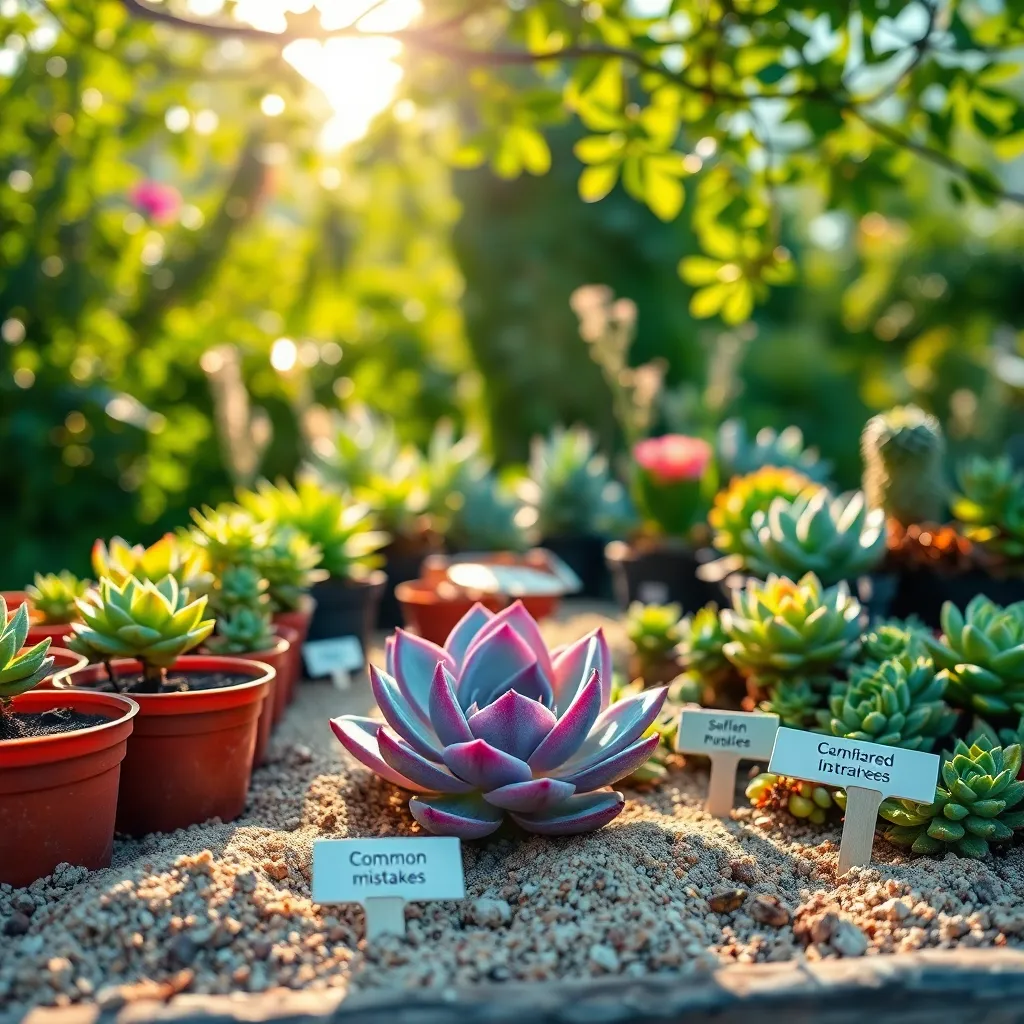
A common mistake when propagating succulents is using the wrong soil type. Succulents thrive in well-draining soil, so choose a cactus mix or amend regular potting soil with sand or perlite for improved drainage.
Another frequent error is overwatering, which can lead to root rot. Ensure the soil is completely dry before watering, and remember that succulents require less water than most other plants, especially during cooler months.
It’s also important to consider light conditions. While succulents need bright light, direct sunlight can scorch their leaves, especially when they’re newly propagated. Place your propagated succulents in a spot with indirect sunlight to help them establish without stress.
Some gardeners neglect to allow cuttings to callous over before planting, a critical step to prevent rot. Let your cuttings dry for a few days until the cut ends have hardened before placing them in soil.
Forgetting to provide adequate air circulation is another oversight. Stagnant air can encourage pests and diseases, so ensure your succulents are in a well-ventilated area to promote healthy growth.
Lastly, patience is crucial when propagating succulents. Roots may take several weeks to develop, so resist the urge to disturb your cuttings frequently. With time and the right conditions, your succulents will start to thrive.
Conclusion: Growing Success with These Plants
In exploring the delightful journey of propagating succulents, we uncovered five vital relationship concepts that can enrich our connections. First, nurturing relationships requires patience, akin to waiting for roots to grow. Second, communication is the sunlight that helps relationships thrive. Third, adaptability is essential, just as succulents adjust to different environments. Fourth, consistent effort, like regular watering, sustains growth. Lastly, celebrating small victories fosters a sense of fulfillment and joy.
To put these insights into action, choose one relationship in your life today and focus on one of these concepts—be it through a heartfelt conversation or a small act of kindness. This simple step can initiate meaningful growth.
Remember, relationships, like succulents, flourish when cared for attentively. Bookmark this article now as a valuable resource to revisit on your journey to nurturing resilient bonds. With these guiding principles, you’re equipped to cultivate relationships that not only endure but thrive. Embrace the potential for relationship success, knowing that each thoughtful action you take today lays the foundation for a more connected tomorrow.

